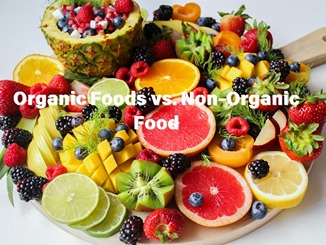Photo by Jane Trang Doan from Pexels/edit by canva
When it comes to feeding your family, choosing between organic foods and non-organic foods can be confusing. Both options have their benefits and drawbacks. This guide will help you make informed choices that suit your family’s needs.
Understanding Organic Foods
- What Are Organic Foods?
Organic foods are grown without synthetic pesticides, fertilizers, or GMOs (genetically modified organisms). They focus on natural methods of farming.
Benefits
- Fewer Chemicals: Organic produce usually has lower pesticide residues.
- Higher Nutritional Value: Some studies suggest organic foods may have higher antioxidant levels.
Understanding Non-Organic Foods
- What Are Non-Organic Foods?
Non-organic foods can be grown with synthetic chemicals and often include GMOs. They are typically produced for higher yields. - Benefits
- Cost-Effective: Non-organic foods are generally cheaper, making them more accessible.
- Availability: They are widely available in most grocery stores.
Health Considerations
- Nutritional Value:
Most research shows that organic and non-organic foods are similar in nutritional content. Choosing a variety of fruits and vegetables is key, regardless of type. - Pesticide Exposure:
While organic foods have fewer chemicals, washing and peeling non-organic produce can help reduce pesticide residues.
Environmental Impact
- Organic Farming:
Organic practices promote biodiversity and soil health. They aim to reduce pollution and support sustainable farming. - Non-Organic Farming:
Conventional farming methods can lead to soil depletion and chemical runoff, which may harm local ecosystems.
Taste Differences
- Taste Test:
Many people believe organic foods taste better. However, taste can be subjective. It’s worth trying both types to see what your family prefers.
Making Your Choice
- Budget:
Consider your budget when choosing. If organic foods are too expensive, prioritize buying organic for items on the “Dirty Dozen” list (fruits and veggies with the highest pesticide residues). - Availability:
If organic options aren’t available in your area, non-organic foods can still provide essential nutrients for your family. - Balance:
Aim for a balance. You don’t have to go fully organic. Incorporating both types into your diet can be a practical solution.
Conclusion
Making informed choices about organic foods vs. non-organic foods doesn’t have to be overwhelming. By understanding the differences, considering your family’s health and budget, and being mindful of environmental impacts, you can make choices that work for you. Remember, the goal is to provide nutritious food for your family, whether it’s organic or non-organic.

